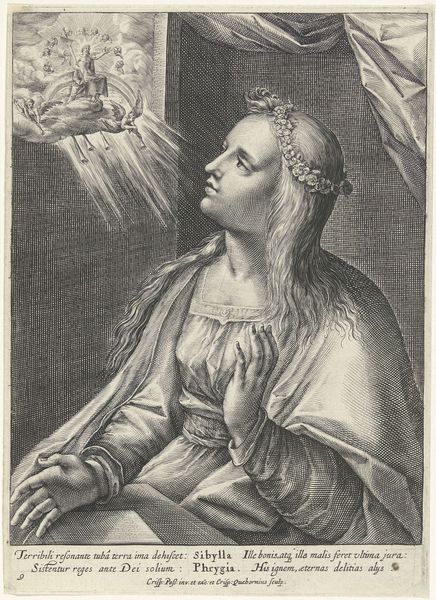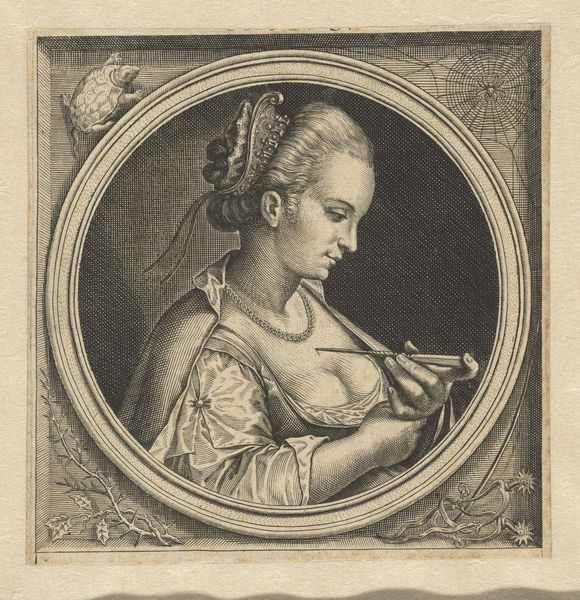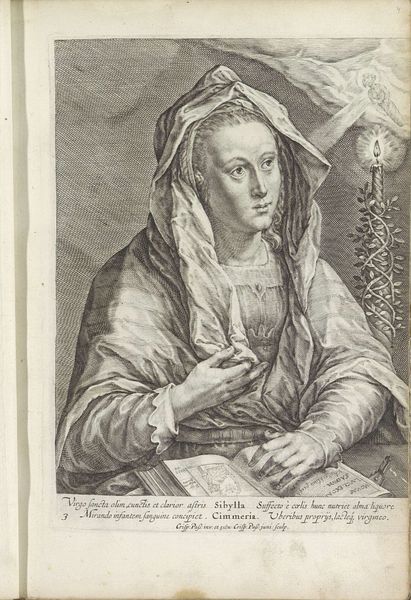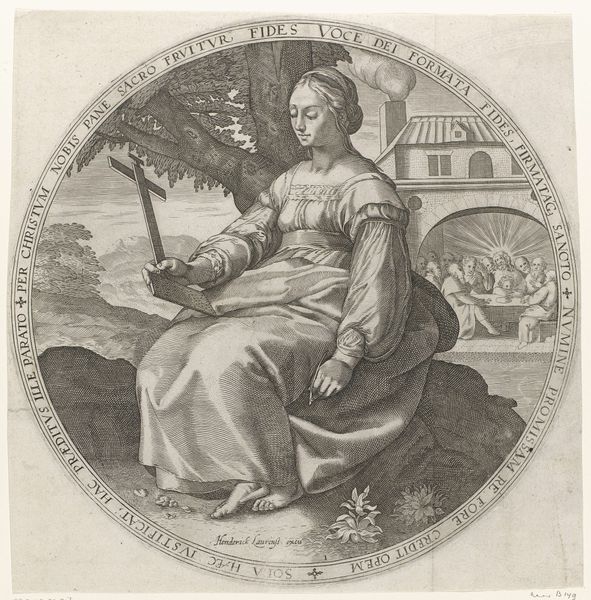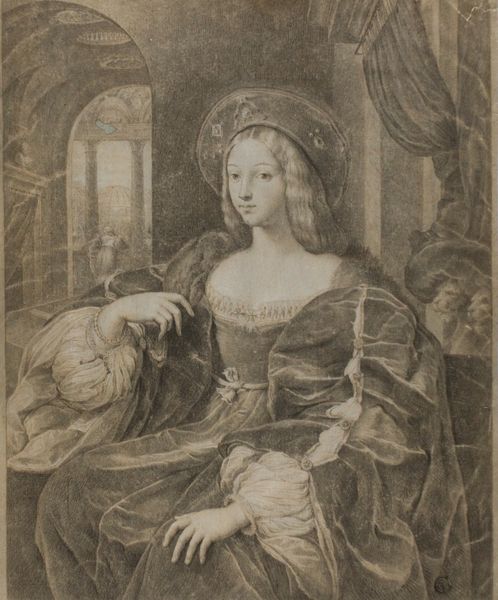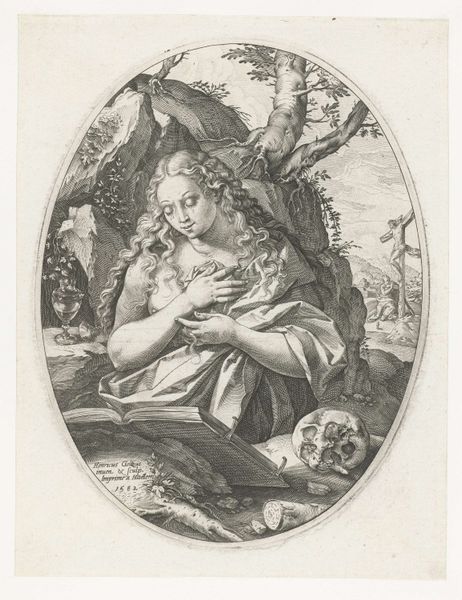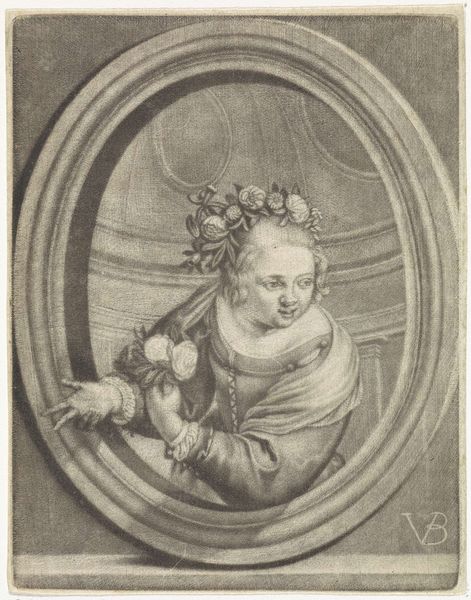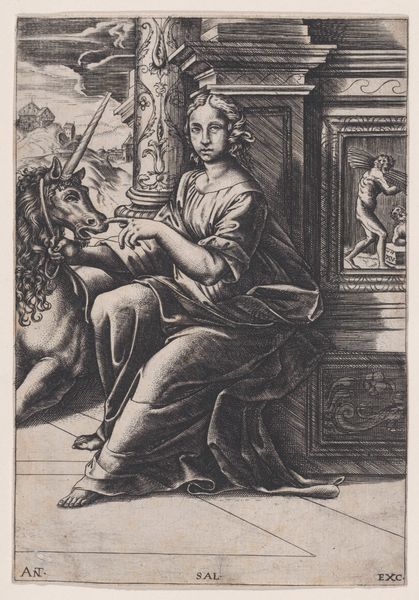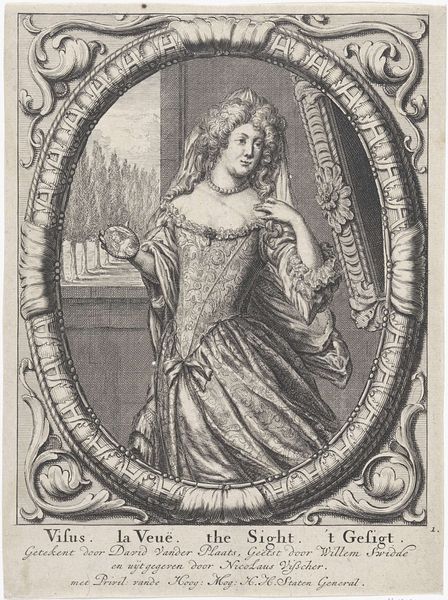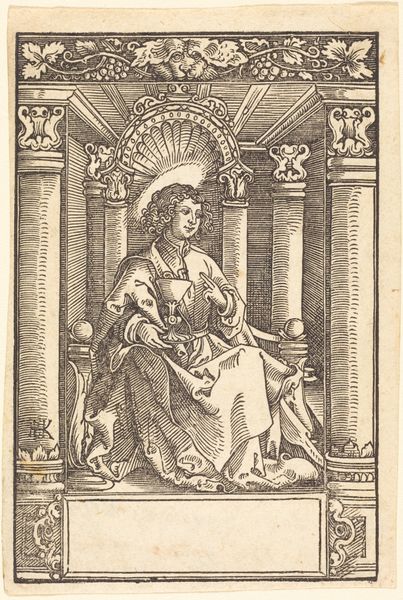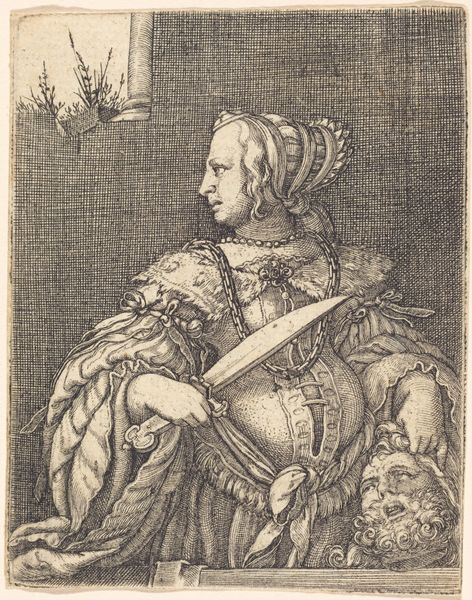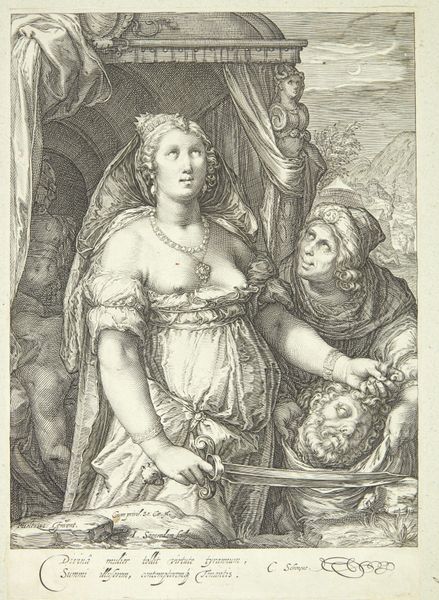
drawing, intaglio, engraving
#
portrait
#
drawing
#
baroque
#
intaglio
#
portrait drawing
#
nude
#
engraving
Dimensions: height 123 mm, width 123 mm
Copyright: Rijks Museum: Open Domain
Jacob van der Heyden created this print, sometime before his death in 1645, using a technique called engraving. Look closely, and you’ll see that the image is made up of thousands of tiny lines, each one painstakingly etched into a copper plate. The plate is then inked, and the ink held in these grooves, before being pressed onto paper. This process demanded precision and patience, reflecting a world where skilled handwork was highly valued. The tools of an engraver, such as lenses and burins, are displayed around the central portrait of a woman looking at her reflection, which gives insight into the labor-intensive world of printmaking in the 17th century. Consider the time, and care, required to produce just one of these images, let alone a whole edition. Ultimately, by focusing on the labor and materials involved, we can appreciate the value of the print, and the skilled work of artists like Van der Heyden. It encourages us to look beyond the image itself, and to think about the human effort that brought it into being.
Comments
No comments
Be the first to comment and join the conversation on the ultimate creative platform.
